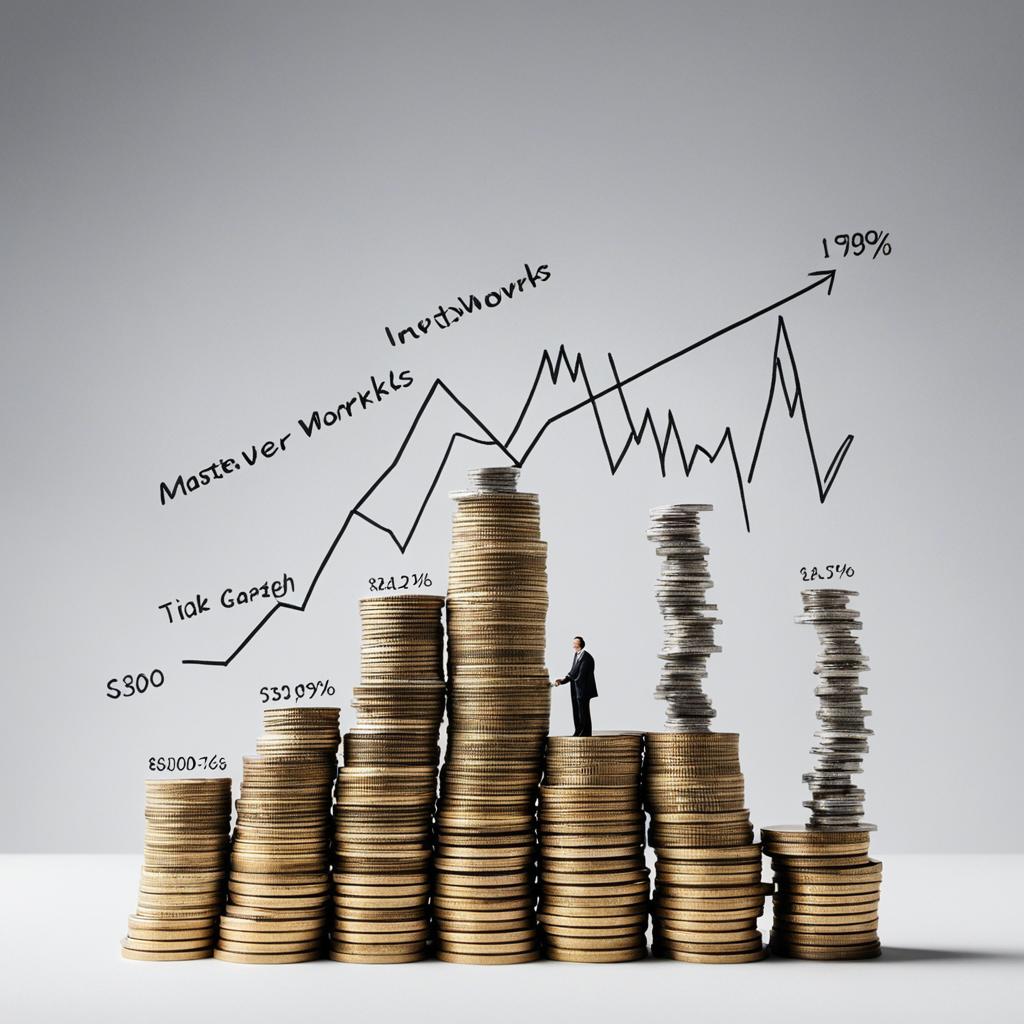Are you looking for an innovative way to diversify your investment portfolio and potentially achieve high returns? Masterworks may provide the solution you’ve been searching for. In this Masterworks review, I will explore how this platform allows you to invest in fine art through fractional ownership, making the exclusive world of high-end art investing more accessible to regular investors.
Who Should Choose Masterworks?
Investing in fine art can be an exciting and potentially lucrative venture for investors looking to diversify their portfolios. Masterworks provides a unique platform for individuals to participate in the art market through fractional ownership, making it a compelling option for those seeking alternative investments.
Masterworks is especially suitable for investors who want to avoid the costs, risks, and hassles of buying entire works of art themselves. By offering fractional shares, Masterworks allows investors to access high-value art without the need for significant capital.
One of the key advantages of Masterworks is its accessibility to regular investors. Unlike traditional art investing, Masterworks has no minimum investment requirement, making it a viable option for individuals looking to dip their toes into the world of fine art.
However, it’s important to note that investing in art carries certain risks. Art appreciation can be unpredictable, and there is no guarantee that a work of art will generate a profit. Investors should be willing to take on some extra risk in exchange for the potential of higher gains.
Furthermore, a passion for contemporary art and basic knowledge of the art world can enhance the investing experience with Masterworks. Understanding the trends, artists, and market dynamics can help investors make informed decisions and navigate the art market effectively.
In summary, Masterworks is an attractive option for investors looking to add alternative investments in fine art to their portfolios. With its accessibility and fractional ownership model, it opens the door to the exclusive world of high-end art investing, offering the potential for both financial and aesthetic rewards.
Who should choose Masterworks?
- Investors seeking alternative investments in fine art
- Individuals looking to avoid the costs and risks of buying entire works of art
- Regular investors without high capital requirements
“Investing in fine art can be a thrilling journey, and Masterworks makes it more accessible than ever before.”
By providing an opportunity to invest in fractional shares of highly valuable artworks, Masterworks opens up new horizons for investors and brings them closer to the captivating world of fine art.
| Benefits of Choosing Masterworks | Considerations When Choosing Masterworks |
|---|---|
|
|
How the Masterworks Platform Works
Let me guide you through the workings of the Masterworks platform. It all starts with the evaluation of promising contemporary artists and the selection of artworks that have the potential to appreciate in value over time.
Once an artwork is purchased by Masterworks, they file with the Securities and Exchange Commission (SEC) to sell fractional shares in the artwork to investors through their platform. This allows investors to own a fraction of the artwork and benefit from its potential appreciation.
Shares in the artwork are offered to investors as a primary offering for a period of 90 days. During this time, investors have the opportunity to purchase shares at the listed price, which is typically set at $20 per share. This low barrier to entry makes art investment accessible to regular investors, regardless of their financial means.
Masterworks holds the artworks in its collection for a period of three to ten years, patiently waiting for the right opportunity to sell them on the contemporary art market. Once a sale is complete, the proceeds are distributed to the investors who own shares in the artwork. The distribution is prorated based on the number of shares owned, ensuring fair allocation of the selling price.
To give you a clearer picture of how the Masterworks platform works, I’ve prepared a table summarizing the key steps and features:
| Step | Description |
|---|---|
| Evaluation | Promising contemporary artists and artworks are carefully evaluated. |
| Purchase | Masterworks buys selected artworks with potential for appreciation. |
| Fractional Offering | Masterworks files with the SEC to sell fractional shares in the artworks to investors. |
| Investment Opportunity | Investors can purchase shares at the listed price during the 90-day offering period. |
| Artwork Holding | Masterworks holds the artworks for a period of three to ten years. |
| Sale and Distribution | When an artwork is sold, proceeds are distributed to investors based on their share ownership. |
This image provides a visual representation of how the Masterworks platform functions, illustrating the process from evaluation to distribution of proceeds. As you can see, Masterworks operates by carefully selecting and acquiring artworks, offering fractional shares to investors, and facilitating the sale of artworks when the time is right.
Now that you have a better understanding of how the Masterworks platform works, let’s delve deeper into the fees and costs associated with investing in art through Masterworks in the next section.
Masterworks Fees and Costs
When considering an investment platform like Masterworks, it’s important to understand the fees and costs associated with the service. In this section, I will provide a comprehensive review of the fees involved, so you can make an informed decision.
Masterworks charges a 1.5% annual management fee based on the total value of your account. This fee is deducted in equity each year. It covers the expenses associated with managing the artwork, including storage, appraisals, insurance, and SEC regulatory fees.
Additionally, if Masterworks sells a work of art on the open market and generates a profit after three to ten years, they keep 20% of the profits. This is their way of monetizing their service and covering the costs of operating the platform.
It’s essential to note that there are no transaction fees for buying or selling shares initially or on the secondary market. This provides flexibility and allows investors to navigate the platform without incurring additional costs.
Masterworks Fees and Costs Summary:
| Fee | Description |
|---|---|
| 1.5% annual management fee | Deducted in equity each year based on the total value of your account |
| 20% profit share | Applies when Masterworks sells a work of art on the open market after three to ten years for a gain |
| No transaction fees | No fees for buying or selling shares initially or on the secondary market |
By understanding the fees and costs associated with Masterworks, you can assess how they may impact your investment returns. It’s important to evaluate these fees in the context of the potential benefits and risks of investing in fine art through the platform.
Masterworks Advantages
Investing with Masterworks offers a range of advantages for art enthusiasts and investors alike. Here are some key benefits:
Excellent Art Investment Research
Masterworks provides access to a comprehensive contemporary art price database, which tracks thousands of pieces of art and offers valuable financial information on each piece. This research allows investors to make well-informed decisions and identify potentially lucrative investment opportunities.
User-Friendly Platform and Mobile App
Masterworks offers a user-friendly online platform and a convenient mobile app, allowing investors to easily navigate the platform, monitor their investments, and access their portfolios on the go. The intuitive interface makes it simple for investors to stay informed and manage their art investments effectively.
Historically Higher Returns
Artwork has shown historically higher returns compared to other investment options such as stocks and real estate. Investing in fine art through Masterworks’ curated collection allows investors to tap into the potential for substantial appreciation and diversify their investment portfolios.
Democratizing Art Investment
Prior to platforms like Masterworks, investing in fine art was primarily accessible to the wealthy. Masterworks breaks down barriers and offers regular investors the chance to participate in the lucrative art market. Now, art enthusiasts across different income levels can enjoy the benefits and potential returns of art investment.
Reliable Customer Support
Masterworks provides reliable customer support, offering assistance to investors through both phone and email channels. If investors have any questions or concerns about their investments or the platform, they can rely on Masterworks’ responsive customer support team to provide the necessary guidance and support.
Masterworks’ user-friendly platform, excellent research resources, historically higher returns, democratization of art investment, and reliable customer support make it an attractive option for investors looking to tap into the world of fine art investment.
Masterworks Disadvantages
While Masterworks offers numerous advantages, it’s important to consider the potential drawbacks before investing. Here are some disadvantages to keep in mind:
- Art Investment Portfolio Design: As an investor, you are responsible for selecting which fractional shares to invest in, designing your own art investment portfolio. This may pose a challenge for individuals who lack knowledge about the art market.
- Lack of Ongoing Cash Flows: Fine art investments do not generate regular income or cash flows like dividends or rental income. The potential for profit relies on finding a buyer who is willing to purchase the artwork at a higher price in the future.
- Taxation of Fine Art: Fine art is categorized as a collectible and is subject to higher tax rates compared to conventional investments. This can impact your overall returns and should be considered when evaluating the potential benefits of art investing.
- Phone Interview Requirement: Joining Masterworks involves a phone interview, which can be a potential inconvenience for some individuals who prefer a completely digital onboarding process.
- Limited Accessibility for International Investors: The secondary market on Masterworks is currently only available to U.S. citizens with a U.S.-based bank account. This limitation restricts the accessibility of the platform for international investors.
Despite these disadvantages, Masterworks offers a unique opportunity to invest in fine art and potentially benefit from its appreciation. It is important to carefully assess these drawbacks and consider whether they align with your investment goals and risk tolerance.
Masterworks Disadvantages
| Disadvantages | Impact |
|---|---|
| Art Investment Portfolio Design | Requires expertise and knowledge |
| Lack of Ongoing Cash Flows | No regular income from investments |
| Taxation of Fine Art | Higher tax rates as collectibles |
| Phone Interview Requirement | Potential inconvenience for some |
| Limited Accessibility for International Investors | Restricted access to secondary market |

About Masterworks
Masterworks is a privately held startup company based in New York City. It was founded in 2017 by Scott Lynn, and its first acquisition was Andy Warhol’s painting 1 Colored Marilyn. Masterworks raised $110 million in series A venture capital funding in October 2024, valuing the company at over $1 billion.
The platform has gained significant traction in the art market, with a large number of assets under management, art purchases, and members on the platform.
Masterworks provides a unique opportunity for investors to own a fraction of valuable artwork and potentially benefit from its appreciation over time. With a focus on contemporary art, the platform allows regular investors to access the world of high-end art investing. By purchasing shares of carefully selected artworks, investors can diversify their portfolios and potentially achieve high returns.
Through its innovative approach and comprehensive management, Masterworks has established itself as a leading player in the art investment space. It offers a user-friendly platform, reliable customer support, and a robust research team analyzing the art market to provide insights and guidance to investors.
With its successful track record and growing popularity, Masterworks continues to shape the way people invest and participate in the fine art market.
What is Masterworks?
Masterworks is an innovative platform that allows individuals to invest in fine art through fractional ownership. With Masterworks, you can combine the excitement of investing in prestigious blue-chip art valued up to $30 million with the flexibility of fractional investing. The platform carefully analyzes the appreciation potential of specific art pieces, acquiring artworks that have the best chance of continuing to appreciate in value over time.
As part of the investment process, Masterworks qualifies the artworks with the Securities and Exchange Commission (SEC) and lists them for sale on their platform. This ensures transparency and regulatory compliance, giving investors peace of mind. Once you’ve made your investment, you can easily monitor the performance of your art investments through the Masterworks platform. If you choose, you can sell your shares on the secondary market or hold onto them for an exit event, potentially maximizing your returns.
Investing in fine art through Masterworks is an exciting opportunity to diversify your investment portfolio and potentially benefit from the appreciation of high-end artwork. Whether you’re a seasoned investor or new to the art market, Masterworks provides a user-friendly platform for individuals to access the world of fine art investing.

Why invest in fine art through Masterworks?
“Masterworks allows investors of all sizes to participate in the fine art market, which was previously limited to the wealthy few. The platform opens doors to a lucrative investment opportunity, offering the potential for significant returns.”
Investing in fine art has historically shown higher returns compared to other investment options such as stocks and real estate. It can provide diversification for your portfolio, reducing the risk associated with traditional asset classes. Additionally, investing in art can act as a hedge against inflation and stock market volatility, safeguarding your wealth.
Masterworks offers comprehensive research and analysis on the art market, empowering investors with valuable insights to make informed decisions. Their expansive contemporary art price database, tracking thousands of pieces, provides financial information about each artwork, ensuring you have the information you need to invest wisely.
Moreover, Masterworks’ user-friendly platform and mobile app make it convenient to navigate your art investment portfolio. With 24/7 customer support available via phone and email, you can rely on their team for assistance whenever needed.
Masterworks Fees
When considering any investment opportunity, it’s essential to understand the fees involved. In the case of Masterworks, there are two primary fees to consider.
1. Annual Management Fee
Masterworks charges a 1.5% annual management fee based on the total value of your investment account. This fee covers the costs of managing and maintaining the artwork in their portfolio. It includes expenses such as storage, appraisals, insurance, and SEC regulatory fees. The annual management fee is deducted directly from your account, impacting the overall return on your investment.
2. Profit Share
In addition to the annual management fee, Masterworks retains 20% of the profits if a work of art is sold on the open market after three to ten years for a gain. This profit share ensures that Masterworks has a vested interest in maximizing the returns on the artworks they manage.
It’s important to note that there are no transaction fees for buying or selling shares initially or on the secondary market. This means you can actively manage your investments without incurring additional costs.
Now that we’ve covered the fees, let’s take a closer look at the advantages and disadvantages of investing in Masterworks.
| Fee | Description |
|---|---|
| Annual Management Fee | 1.5% of the total value of the investment account |
| Profit Share | Masterworks retains 20% of the profits from selling artwork on the open market |
| Transaction Fees | No fees for buying or selling shares initially or on the secondary market |
Secondary Market
Masterworks has created a secondary market that allows investors to buy and sell fractional shares of artwork. This market provides liquidity for those who wish to sell their shares before an exit event, offering an additional platform for trading fractional shares.
| Benefits of the Secondary Market | Potential Drawbacks |
|---|---|
|
|
Investors can list their shares for sale on the marketplace, while potential buyers can make offers. This transparent process allows investors to see historical data from previous sales, facilitating informed decision-making when buying or selling fractional shares of artwork.
Masterworks Advantages
When it comes to investing in art, Masterworks offers several advantages that make it an attractive option for investors. Here are some key benefits:
1. Impressive Track Record
Masterworks has a proven track record of delivering net annualized returns ranging from 9% to 39%, outperforming the S&P 500. This solid performance demonstrates the platform’s ability to generate substantial returns for investors.
2. Convenient Process
Investing in art through Masterworks is a hassle-free experience. The platform handles the entire process, from finding and purchasing artworks to storing them in secure facilities. This convenience saves investors time and effort, allowing them to focus on maximizing their investment returns.
3. Insurance and Secure Storage
Artwork purchased through Masterworks is insured and stored in secure facilities. This ensures that the investment is protected and mitigates the risk of damage or loss. Investors can have peace of mind knowing that their valuable assets are well taken care of.
4. Expert Research Team
Masterworks boasts a leading research team that extensively analyzes the art market. Their insights and guidance provide valuable information to investors, helping them make informed decisions based on market trends and potential opportunities.
These advantages make Masterworks an appealing choice for investors looking to diversify their portfolios and tap into the world of fine art investing.

Stay tuned for the next section where we’ll explore some of the potential disadvantages of investing in art through Masterworks.
Masterworks Disadvantages
While investing in fine art through Masterworks has its advantages, it’s important to consider some of the potential drawbacks:
- Lack of ongoing cash flows: Unlike traditional investments that generate regular income, fine art investments primarily focus on capital appreciation. Investors should be prepared for potential fluctuations in the art market and understand that returns may not be immediate.
- Unregulated art market: The art market operates outside the realm of strict regulations, which means there is no guarantee of appreciation or liquidity for artworks. Prices can be subject to unpredictable fluctuations, and investors should carefully evaluate the risks involved.
- Management fees and profit sharing: Masterworks charges a 1.5% annual management fee based on the total value of an investor’s account. Additionally, they keep 20% of the profits when a work of art is sold for a gain. These fees can impact the overall investment returns and should be considered when evaluating the potential benefits of investing through Masterworks.
- Higher tax rates: Fine art is considered a collectible and is subject to higher tax rates compared to other investments. Investors should consult with a tax professional to understand the tax implications and potential impact on their investment returns.
While these disadvantages exist, many investors still find value in the unique opportunity to invest in fine art through platforms like Masterworks. It’s crucial to assess personal financial goals and risk tolerance before deciding to engage in this alternative investment avenue.
Masterworks Customer Service Review
When it comes to customer service, Masterworks strives to provide a positive and reliable experience. They offer support to their users through email and phone, ensuring that any queries or concerns are addressed promptly.
Masterworks has received an A+ rating and accreditation from the Better Business Bureau, indicating their commitment to providing excellent customer service. This recognition highlights their dedication to resolving customer issues and maintaining high standards of professionalism.
However, it’s important to note that customer experiences can vary. Online reviews on platforms like TrustPilot have shown a mix of positive and negative feedback. It is advisable for potential investors to read multiple reviews and consider individual experiences when evaluating the customer service provided by Masterworks.
The goal of Masterworks is to offer a seamless and satisfactory user experience, and customer service plays a crucial role in achieving this objective.
Here is an example of what a customer had to say about their experience with Masterworks customer service:
“I had a few questions regarding the investment process, and the customer service team at Masterworks was incredibly helpful and patient. They guided me through every step and provided me with the information I needed to make informed decisions. Their professionalism and knowledge reassured me that I made the right choice with Masterworks.”
– John Smith
Masterworks Customer Service Highlights
| Advantages | Disadvantages |
|---|---|
|
|
Ultimately, the quality of customer service is an essential factor to consider when choosing an investment platform like Masterworks. The ability to rely on reliable support can greatly enhance the overall investor experience and provide peace of mind.

Who Is Masterworks?
Masterworks is a New York-based company that was founded in 2017 by Scott Lynn. Their mission is to make art investing accessible to a wider audience by offering fractional ownership of fine artwork. Since its inception, Masterworks has experienced rapid growth and has become a prominent player in the art investment space. The company manages a significant portfolio of assets and has a large and active membership on their platform.
With a commitment to bridging the gap between the art world and everyday investors, Masterworks has garnered attention and raised substantial funding, solidifying its position as a leader in the market. Their platform provides individuals with an opportunity to immerse themselves in the world of art investing and potentially benefit from the appreciation of valuable artwork.
Through its innovative approach to fractional ownership, Masterworks aims to democratize the art market and offer investors a chance to diversify their portfolios with blue-chip artworks. The company’s success and growth underline the increasing demand for art as an investment asset class.
With a team of art experts and a robust platform, Masterworks serves as a trusted intermediary between investors and the art market, simplifying the investment process and providing access to a previously exclusive realm. As more investors seek alternative investments, Masterworks continues to expand its offering and provide opportunities in the art investment space.
Now let’s take a closer look at the fees associated with investing through Masterworks.
Final Thoughts
When considering investing in the fine art market, Masterworks provides a compelling opportunity for investors to diversify their portfolios and potentially achieve significant returns. With historically higher returns compared to stocks and the accessibility for regular investors, Masterworks offers a unique way to participate in the exclusive world of high-end art investing.
However, it’s important to be aware of the risks involved. The art market is unpredictable, and there is uncertainty surrounding the appreciation of artwork. Additionally, there may be a lack of liquidity for fractional shares, meaning investors may have to wait for an exit event to sell their shares.
It’s essential to carefully evaluate the fees charged by Masterworks, as they can impact overall investment returns. The 1.5% annual management fee, along with the 20% profit share when a work of art is sold, should be taken into consideration when making investment decisions. Conducting a comprehensive review of Masterworks is crucial to ensure an understanding of the platform’s fees and associated costs.
In conclusion, Masterworks offers a unique opportunity to invest in fine art and potentially benefit from its appreciation. However, it is essential to conduct an unbiased and comprehensive masterworks review, carefully considering the associated risks and fees. Investors should carefully evaluate their financial goals and risk tolerance before deciding to invest in fine art through Masterworks.
Conclusion
Masterworks provides an innovative and accessible way for regular investors to enter the world of high-end art investing through fractional ownership. With the potential for high returns and the opportunity to diversify investment portfolios, it offers a unique avenue for both art enthusiasts and those seeking alternative investments.
However, it’s important to carefully consider the fees and risks associated with investing in fine art through Masterworks. The platform charges a 1.5% annual management fee and retains 20% of the profits from the sale of artwork. These fees, along with the potential lack of liquidity in the art market, should be factored into investment decisions.
Investors interested in Masterworks should also have a passion for contemporary art and a basic understanding of the art market. While the platform provides research and guidance, individuals should be comfortable designing their own art investment portfolios and accepting the uncertainties that come with investing in art.
Overall, Masterworks offers a comprehensive and unbiased approach to investing in fine art. By understanding the platform’s fees, risks, and requirements, investors can make informed decisions and potentially benefit from the appreciation of fine art as part of their investment strategy.
FAQ
Who should choose Masterworks?
Masterworks is a good option for investors looking to add alternative investments in fine art to their portfolios. It is especially suitable for those who want to avoid the costs, risks, and hassles of buying entire works of art themselves. Masterworks has no minimum investment requirement, making it accessible to regular investors. However, investing in art involves certain risks, such as the uncertainty of when a work of art will be sold and the potential for it to not generate a profit. Investors should be willing to take on some extra risk for the chance of higher gains and should have a passion for contemporary art and basic knowledge of the art world.
How does the Masterworks platform work?
Masterworks operates by evaluating promising contemporary artists and purchasing artworks that are likely to appreciate in value over time. Once a work of art is purchased, Masterworks files with the Securities and Exchange Commission (SEC) to sell fractional shares in the work to investors via their platform. Shares are offered for 90 days as a primary offering, and investors can buy shares at the listed price, typically priced at each. Masterworks holds artworks for three to ten years until they find an opportunity to sell them on the contemporary art market. When a sale is complete, proceeds are distributed to investors who own shares in the work, prorated based on the number of shares owned.
What are the fees and costs associated with Masterworks?
Masterworks charges a 1.5% annual management fee based on the total value of an investor’s account. Additionally, if Masterworks sells a work of art on the open market after three to ten years for a gain, they keep 20% of the profits. These fees are used to cover the costs of managing the artwork, such as storage, appraisals, insurance, and SEC regulatory fees. There are no transaction fees for buying or selling shares initially or on the secondary market.
What are the advantages of investing through Masterworks?
Masterworks offers several advantages to investors. They provide excellent art investment research, including a contemporary art price database that tracks thousands of pieces of art and provides financial information about each piece. The platform is user-friendly and accessible through a mobile app. Historically, artwork has shown higher returns compared to other investments like stocks and real estate, and it provides diversification for an investment portfolio. Masterworks also offers the opportunity for regular investors to participate in the fine art market, which was previously limited to the wealthy. Customer support is reliable, with assistance available via phone and email.
What are the disadvantages of investing through Masterworks?
While Masterworks has its advantages, there are also some disadvantages to consider. Investors must design their own art investment portfolios, as they are responsible for choosing which fractional shares to invest in. This may be a disadvantage for those who are not knowledgeable about the art market. Fine art investments carry risks, as they do not generate ongoing cash flows and the potential for profit relies on someone buying the artwork at a higher price in the future. Fine art is also taxed as a collectible at a higher rate than conventional investments. Moreover, joining Masterworks requires a phone interview, which may be an inconvenience for some potential users. The secondary market is only available to U.S. citizens with a U.S.-based bank account, limiting accessibility for international investors.
What can you tell me about Masterworks as a company?
Masterworks is a privately held startup company based in New York City. It was founded in 2017 by Scott Lynn, and its first acquisition was Andy Warhol’s painting 1 Colored Marilyn. Masterworks raised 0 million in series A venture capital funding in October 2024, valuing the company at over
FAQ
Who should choose Masterworks?
Masterworks is a good option for investors looking to add alternative investments in fine art to their portfolios. It is especially suitable for those who want to avoid the costs, risks, and hassles of buying entire works of art themselves. Masterworks has no minimum investment requirement, making it accessible to regular investors. However, investing in art involves certain risks, such as the uncertainty of when a work of art will be sold and the potential for it to not generate a profit. Investors should be willing to take on some extra risk for the chance of higher gains and should have a passion for contemporary art and basic knowledge of the art world.
How does the Masterworks platform work?
Masterworks operates by evaluating promising contemporary artists and purchasing artworks that are likely to appreciate in value over time. Once a work of art is purchased, Masterworks files with the Securities and Exchange Commission (SEC) to sell fractional shares in the work to investors via their platform. Shares are offered for 90 days as a primary offering, and investors can buy shares at the listed price, typically priced at $20 each. Masterworks holds artworks for three to ten years until they find an opportunity to sell them on the contemporary art market. When a sale is complete, proceeds are distributed to investors who own shares in the work, prorated based on the number of shares owned.
What are the fees and costs associated with Masterworks?
Masterworks charges a 1.5% annual management fee based on the total value of an investor’s account. Additionally, if Masterworks sells a work of art on the open market after three to ten years for a gain, they keep 20% of the profits. These fees are used to cover the costs of managing the artwork, such as storage, appraisals, insurance, and SEC regulatory fees. There are no transaction fees for buying or selling shares initially or on the secondary market.
What are the advantages of investing through Masterworks?
Masterworks offers several advantages to investors. They provide excellent art investment research, including a contemporary art price database that tracks thousands of pieces of art and provides financial information about each piece. The platform is user-friendly and accessible through a mobile app. Historically, artwork has shown higher returns compared to other investments like stocks and real estate, and it provides diversification for an investment portfolio. Masterworks also offers the opportunity for regular investors to participate in the fine art market, which was previously limited to the wealthy. Customer support is reliable, with assistance available via phone and email.
What are the disadvantages of investing through Masterworks?
While Masterworks has its advantages, there are also some disadvantages to consider. Investors must design their own art investment portfolios, as they are responsible for choosing which fractional shares to invest in. This may be a disadvantage for those who are not knowledgeable about the art market. Fine art investments carry risks, as they do not generate ongoing cash flows and the potential for profit relies on someone buying the artwork at a higher price in the future. Fine art is also taxed as a collectible at a higher rate than conventional investments. Moreover, joining Masterworks requires a phone interview, which may be an inconvenience for some potential users. The secondary market is only available to U.S. citizens with a U.S.-based bank account, limiting accessibility for international investors.
What can you tell me about Masterworks as a company?
Masterworks is a privately held startup company based in New York City. It was founded in 2017 by Scott Lynn, and its first acquisition was Andy Warhol’s painting 1 Colored Marilyn. Masterworks raised $110 million in series A venture capital funding in October 2024, valuing the company at over $1 billion. The platform has gained significant traction in the art market, with a large number of assets under management, art purchases, and members on the platform.
billion. The platform has gained significant traction in the art market, with a large number of assets under management, art purchases, and members on the platform.
Our Friends
- https://themillennialmoneywoman.com/masterworks-review/
- https://www.forbes.com/advisor/investing/masterworks-review/
- https://thecollegeinvestor.com/23435/masterworks-review/
Money posts:
 How to Invest $1 Million Dollars: Strategies and Tips for Growth and Security
How to Invest $1 Million Dollars: Strategies and Tips for Growth and Security
 13 Best Alternative Investments to Boost Your Portfolio in 2024
13 Best Alternative Investments to Boost Your Portfolio in 2024
 17 Best Alternative Investments To Consider in 2024
17 Best Alternative Investments To Consider in 2024
 Lending Club Investing Review for Investors (2024)
Lending Club Investing Review for Investors (2024)
 12 Investments with High Returns (10% ROI or Better) in 2024
12 Investments with High Returns (10% ROI or Better) in 2024
 12 Investments with High Returns (10% ROI or Better) in 2024
12 Investments with High Returns (10% ROI or Better) in 2024
 Public vs Webull: Which Trading App Is Best? (2024)
Public vs Webull: Which Trading App Is Best? (2024)
 CrowdStreet Review: Commercial Real Estate (2024)
CrowdStreet Review: Commercial Real Estate (2024)

